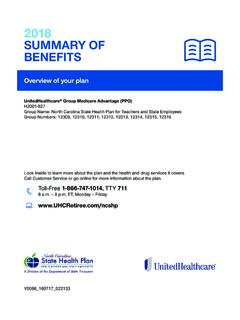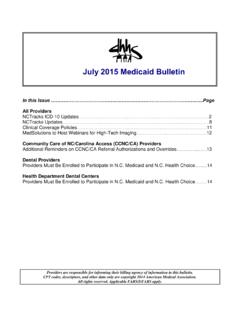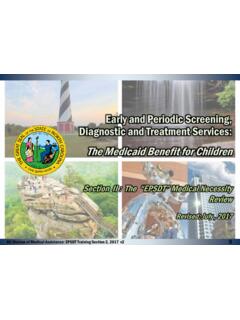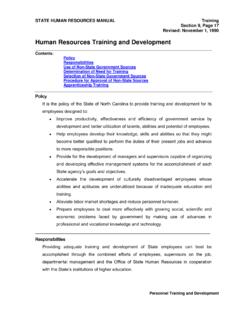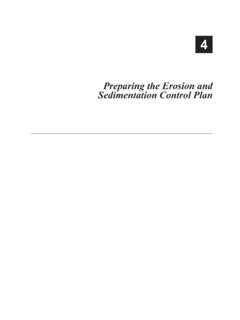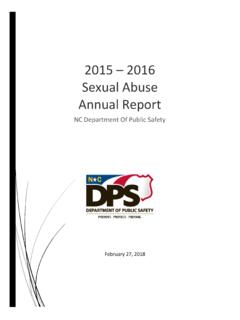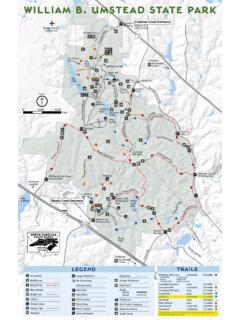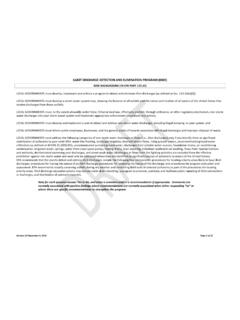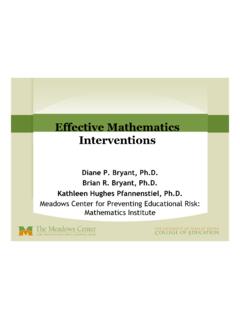Transcription of 7th Grade Mathematics Unpacked Contents
1 7th grade Mathematics Unpacked Contents For the new Standard Course of Study that will be effective in all North Carolina schools in the 2018-19 School Year. This document is designed to help North Carolina educators teach the 7th grade Mathematics Standard Course of Study. NCDPI staff are continually updating and improving these tools to better serve teachers and districts. What is the purpose of this document? The purpose of this document is to increase student achievement by ensuring educators understand the expectations of the new standards. This document may also be used to facilitate discussion among teachers and curriculum staff and to encourage coherence in the sequence, pacing, and units of study for Grade -level curricula. This document, along with on-going professional development, is one of many resources used to understand and teach the NC SCOS. What is in the document? This document includes a detailed clarification of each standard in the Grade level along with a sample of questions or directions that may be used during the instructional sequence to determine whether students are meeting the learning objective outlined by the standard.
2 These items are included to support classroom instruction and are not intended to reflect summative assessment items. The examples included may not fully address the scope of the standard. The document also includes a table of Contents of the standards organized by domain with hyperlinks to assist in navigating the electronic version of this instructional support tool. How do I send Feedback? Please send feedback to us at and we will use your input to refine our unpacking of the standards. Thank You! Just want the standards alone? You can find the standards alone at North Carolina 7th grade Standards Standards for Mathematical Practice Ratio and Proportional Expressions &. The Number System Geometry Statistics & Probability Relationships Equations Analyze proportional Apply and extend previous Use properties of Draw, construct, and Use random sampling to relationships and use them understandings of operations to generate describe geometrical draw inferences about a to solve real-world and operations with fractions to equivalent expressions.
3 Figures and describe the population. mathematical problems. add, subtract, multiply, and relationships between divide rational numbers. them. Solve real-world and Make informal inferences mathematical problems to compare two using numerical and Solve real-world and populations. algebraic expressions, mathematical problems equations, and involving angle measure, inequalities. area, surface area, and volume. Investigate chance processes and develop, use, and evaluate probability models. NC Department of Public Instruction 2 7th grade Unpacking Document Rev. June 2018. Standards for Mathematical Practice Practice Explanations and Examples 1. Make sense of problems In Grade 7, students solve problems involving ratios and rates and discuss how they solved the problems. Students solve real and persevere in solving world problems through the application of algebraic and geometric concepts. Students seek the meaning of a problem and look them.
4 For efficient ways to represent and solve it. They may check their thinking by asking themselves, What is the most efficient way to solve the problem? , Does this make sense? , and Can I solve the problem in a different way? . 2. Reason abstractly and In Grade 7, students represent a wide variety of real world contexts through the use of real numbers and variables in quantitatively. mathematical expressions, equations, and inequalities. Students contextualize to understand the meaning of the number or variable as related to the problem and decontextualize to manipulate symbolic representations by applying properties of operations. 3. Construct viable arguments In Grade 7, students construct arguments using verbal or written explanations accompanied by expressions, equations, and critique the reasoning of inequalities, models, and graphs, tables, and other data displays ( box plots, dot plots, histograms, etc.)
5 The students others. further refine their mathematical communication skills through mathematical discussions in which they critically evaluate their own thinking and the thinking of other students. They pose questions like How did you get that? , Why is that true? , Does that always work? . They explain their thinking to others and respond to others' thinking. 4. Model with Mathematics . In Grade 7, students model problem situations symbolically, graphically, tabularly, and contextually. Students form expressions, equations, or inequalities from real world contexts and connect symbolic and graphical representations. Students explore covariance and represent two quantities simultaneously. They use measures of center and variability and data displays ( box plots and histograms) to draw inferences, make comparisons and formulate predictions. Students use experiments or simulations to generate data sets and create probability models.
6 Students need many opportunities to connect and explain the connections between the different representations. They should be able to use all of these representations as appropriate to any problem's context. 5. Use appropriate tools Students consider available tools (including estimation and technology) when solving a mathematical problem and decide when strategically. certain tools might be helpful. For instance, students in Grade 7 may decide to represent similar data sets using dot plots with the same scale to visually compare the center and variability of the data. Students might use physical objects or applets to generate probability data and use graphing calculators or spreadsheets to manage and represent data in different forms. 6. Attend to precision. In Grade 7, students continue to refine their mathematical communication skills by using clear and precise language in their discussions with others and in their own reasoning.
7 Students define variables, specify units of measure, and label axes accurately. Students use appropriate terminology when referring to rates, ratios, probability models, geometric figures, data displays, and components of expressions, equations or inequalities. 7. Look for and make use of Students routinely seek patterns or structures to model and solve problems. Students apply properties to generate equivalent structure. expressions ( 6 + 2 = 3(2 + ) by distributive property) and solve equations ( 2 + 3 = 15, 2 = 12 by subtraction property of equality), = 6 by division property of equality). Students compose and decompose two- and three-dimensional figures to solve real world problems involving scale drawings, surface area, and volume. Students examine tree diagrams or systematic lists to determine the sample space for compound events and verify that they have listed all possibilities. 8. Look for and express In Grade 7, students use repeated reasoning to understand algorithms and make generalizations about patterns.
8 During regularity in repeated multiple opportunities to solve and model problems, they may notice that / / = / and construct other examples and reasoning. models that confirm their generalization. They extend their thinking to include complex fractions and rational numbers. Students formally begin to make connections between covariance, rates, and representations showing the relationships between quantities. They create, explain, evaluate, and modify probability models to describe simple and compound events. Return to: Standards NC Department of Public Instruction 3 7th grade Unpacking Document Rev. June 2018. Ratio and Proportional Reasoning Analyze proportional relationships and use them to solve real-world and mathematical problems. Compute unit rates associated with ratios of fractions to solve real-world and mathematical problems. Clarification Checking for Understanding 1 1. This standard asks students to understand the concepts of a unit rate in Julia walks mile in each hour.
9 She continues to walk at the same pace. 2 2. proportional relationships. This concept will allow students to write equations, a) What unit rate would be needed to find how many miles Julia walked if graph and compare proportional relationships. we know the number of hours? th b) What unit rate would be needed to find how many hours Julia walked if In 6 Grade , students learned to find the multiplicative relationships within a we know how far she walked? ratio, the rate, and they explored the concepts of independent and dependent 1. variables. Students also learned that equivalent ratios also had equivalent c) If Julia walked for 1 hours, how far did Julia walk? 3. rates. d) If Julia walked for miles, how long did Julia's walk take? In 7th grade , students build on this understanding to: Find the appropriate rate based on context. Rewrite any rate as a unit rate. 1 1. Know that a rate can be used to express all of its associated If a gallon of paint covers of a wall, continuing at this rate how much paint 2 6.
10 Equivalent ratios. is needed for the entire wall? Ratios in 7th grade can include fractions and decimals, which may lead to . students working with complex fractions, a fraction in the form . It is important . for students to interpret a complex faction as the division of two fractions. Emily leaves her house at exactly 8:25 am to bike to her school, which is miles away. When she passes the post office, which is miles away from her home, she looks at her watch and sees that it is 30 seconds past 8:29 am. If Emily's school starts at 8:50 am, can Emily make it to school on time without increasing her rate of speed? Show and/or explain the work necessary to support your answer. Taken from : SBAC Mathematics Practice Test Scoring Guide Grade 7 p. 36. Return to: Standards NC Department of Public Instruction 4 7th grade Unpacking Document Rev. June 2018. Analyze proportional relationships and use them to solve real-world and mathematical problems.
